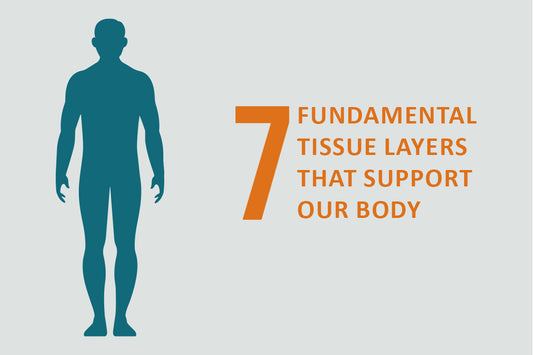Breathing is something we do without thinking, but it's also something we can consciously control to enhance our well-being. Breathing exercises are simple practices that can have profound effects on respiratory health. These exercises can help restore lung function, increase lung capacity, and bring a sense of calm and relaxation. Let's explore how breathing exercises work and how they can make a difference in our respiratory health.
Understanding Breathing Exercises
Breathing exercises involve controlling the breath in a specific way to achieve a desired effect. They range from simple techniques like deep breathing to more complex practices like diaphragmatic breathing and alternate nostril breathing. These exercises can be done anywhere and at any time, making them a convenient tool for anyone looking to enhance their respiratory health.
How Breathing Exercises Work
When we breathe deeply and slowly, we use our diaphragm more effectively. The diaphragm is a large, dome-shaped muscle located at the base of the lungs. It's the primary muscle involved in breathing. When we breathe in, the diaphragm contracts and moves downward, creating more space in the chest cavity and allowing the lungs to expand fully. This helps in better oxygen exchange and removal of carbon dioxide from the body.
By practicing breathing exercises regularly, we can train our diaphragm to work more efficiently. This not only helps in enhancing lung function but also reduces the workload on the heart. Efficient breathing leads to better oxygenation of the blood, which in turn supports overall health and well-being.
Benefits of Breathing Exercises
Breathing exercises offer a wide range of benefits for respiratory health. Here are some key ways they can help:
- Enhancing Lung Capacity: Regular practice of breathing exercises can help expand lung capacity. This means your lungs can hold more air, which is particularly beneficial for people with respiratory conditions such as asthma or chronic obstructive pulmonary disease (COPD).
- Strengthening Respiratory Muscles: Just like any other muscle in the body, the muscles involved in breathing can be strengthened through exercise. Stronger respiratory muscles mean better breathing efficiency and reduced fatigue.
- Promoting Relaxation and Reducing Stress: Breathing exercises have a calming effect on the mind and body. They activate the parasympathetic nervous system, which helps counteract the stress response. This can lead to lower levels of stress hormones and a greater sense of calm.
- Improving Posture: Many breathing exercises supports good posture, which is essential for optimal lung function. Proper alignment of the spine and ribcage allows for better lung expansion and more efficient breathing.
- Supporting Overall Health: Improved respiratory function leads to better oxygenation of the body's tissues. This supports the functioning of vital organs and can enhance overall health and energy levels.
Types of Breathing Exercises
There are many different types of breathing exercises, each with its own specific benefits. Here are a few popular ones:
- Diaphragmatic Breathing: Also known as belly breathing, this exercise involves breathing deeply into the diaphragm rather than shallowly into the chest. Place one hand on your chest and the other on your abdomen. Breathe in deeply through your nose, allowing your abdomen to rise as you fill your lungs with air. Exhale slowly through your mouth, letting your abdomen fall. Repeat several times.
- Pursed Lip Breathing: This exercise helps control the pace of your breathing and keeps your airways open longer. Breathe in slowly through your nose. Purse your lips as if you were going to whistle, then exhale slowly and gently through your pursed lips. This technique is particularly helpful for people with COPD.
- Alternate Nostril Breathing: This practice, rooted in yoga, involves breathing through one nostril at a time. Sit comfortably and use your right thumb to close your right nostril. Inhale deeply through your left nostril. Close your left nostril with your right ring finger, then release your right nostril and exhale through it. Repeat the process, alternating nostrils.
- Box Breathing: Also known as square breathing, this exercise involves inhaling, holding the breath, exhaling, and holding the breath again, each for a count of four. Inhale through your nose for a count of four. Hold your breath for a count of four. Exhale through your mouth for a count of four. Hold your breath again for a count of four. Repeat several times.
Incorporating Breathing Exercises into Your Routine
Adding breathing exercises to your daily routine can be easy and enjoyable. Here are some tips to get started:
- Set Aside Time: Dedicate a few minutes each day to practice breathing exercises. It can be in the morning, during a break at work, or before bed.
- Find a Quiet Space: Choose a quiet and comfortable place where you can focus on your breath without distractions.
- Be Consistent: Consistency is key to reaping the benefits of breathing exercises. Make it a regular part of your routine.
- Listen to Your Body: Pay attention to how your body feels during and after breathing exercises. Adjust the intensity and duration as needed.
Before and After: The Effects of Breathing Exercises
The impact of breathing exercises can be seen and felt over time. Before starting a routine, you might notice shallow breathing, shortness of breath, or feelings of stress and tension. After regularly practicing breathing exercises, you may experience deeper, more controlled breaths, enhanced lung capacity, and a greater sense of calm and relaxation.
Many people report feeling more energized and focused after incorporating breathing exercises into their routine. Improved respiratory function can also lead to better sleep and overall well-being.
Conclusion
Breathing exercises are a simple yet powerful tool for enhancing respiratory health. By taking a few minutes each day to practice these exercises, you can help restore lung function, strengthen respiratory muscles, and promote relaxation. Whether you're dealing with a respiratory condition or simply looking to enhance your overall health, breathing exercises offer a natural and effective way to support your respiratory system.
Take a deep breath, start practicing, and experience the positive effects of breathing exercises on your respiratory health.






